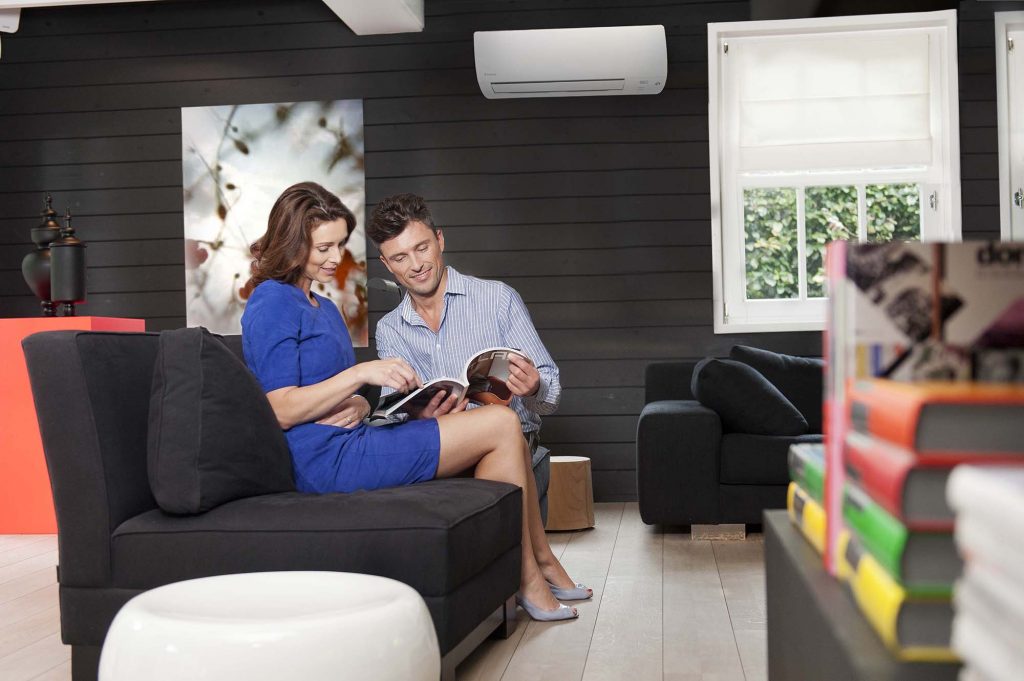What Are Ductless (Mini-Split) Heat Pumps?

Ductless heat pumps offer a more efficient heating/cooling solution. Plus, they have an installation process that is much easier and quicker than you might have thought.
Ductless heat pumps (also known as mini-splits) are an energy efficient and effective way to heat and cool your home. Despite their growing popularity among homeowners, there are a few misconceptions about heat pumps that might make anyone considering adding a new heating and cooling system a little apprehensive at first.
One misconception is that installing a mini-split heat pump is an involved, costly, and lengthy process. Although it’s not recommended to install a mini-split yourself, the installation process for a mini split is actually quite quick and doesn’t create much disturbance to your home.
What Are The Different Parts of a Mini-Split?
Before diving into how a mini-split is installed in your house, it’s essential to get a grasp on what a mini-split is and what options are available to you when it comes to adding one to your home.
The three main components of a ductless heat pump consist of:
- The Compressor (outdoor unit): This is the largest part of the heat pump which usually sits slightly off the ground outside of your home. This piece is responsible for expelling heat during the cooling mode and taking in heat during the winter.
- The Air Handler (indoor unit): The air handler is responsible for distributing the conditioned air throughout the home. The air handler usually sits high up on the wall near the ceiling, or on the lower wall near the floor. Multi-zone mini-splits will have several air handlers connected to one outdoor unit to control the climate in several locations throughout the home.
- Wiring: Mini-splits also contain four wires, each having various tasks. There is one drain line to extract condensation, two refrigerant lines that help exchange the heat, and one electrical wire that allows for the inside and outside units to communicate with each other.
Variations of Mini-Splits
There are two main types of mini-split heat pumps: single zone and multi-zone. Each has its own ideal use case, whether you’re looking to heat one area of your home that is frequently used, or you’re looking for a more comprehensive home heating solution.
Single Zone Mini-Split
Single zone heat pumps are a great option if you are merely looking to cool or heat a specific room such as a workshop, garage or bedroom that is prone to more extreme temperatures compared to the rest of your house.
Single zone mini-splits are also your best bet when you want to cool or heat the most heavily used rooms in your house such as your family room or kitchen. They’re especially useful in open concept homes, where one unit can be all you need to heat a significant portion of your home.
Multi-Zone Mini-Split
Multi-zone mini-splits have two or more indoor units connected to an outdoor unit. This approach is a good option if you are looking for a more complete home heating solution without going through the rigor of retrofitting your home with ductwork.
Multi-zone mini splits work well for families where the whole house may need to be heated or cooled at once, and you want several rooms to be cooled or heated differently. Each air handler can then be controlled separately in order to find the ideal temperature for each room. This approach is also quite efficient as most units have timing features, making it easier to only heat or cool the rooms you’re currently using.
Not sure of the difference between ductless vs ducted heat pumps? Learn more here.
What is the Installation Process?
Because there are so few pieces involved, the process for installing a ductless heat pump is quite quick and unobtrusive compared to ducted units, and especially compared to traditional heating options like furnaces.
In general, the installation of a single zone mini-split would resemble the following process when handled by a trained professional with the right set of specialized tools:
- First, they install the bracket to mount the indoor unit. Ideally in a safe area, somewhere high on the wall and away from any sort of dust producing tools.
- They then drill a small 3-inch hole through the wall so it can then be connected to the outside unit.
- Next, the four wires (mentioned earlier) are connected to the indoor unit and fed through the hole.
- The outdoor unit should then be installed in a safe position away from debris during the warm months and significant ice and snow during the winter.
- From there, the technician will connect the outdoor and indoor units with the wiring (refrigerant, drain, and electrical).
- If necessary, dedicated electrical circuits will be installed.
- Last but not least, the system should be tested to make sure everything is working correctly.
When completed by a trained Daikin Comfort Pro, this whole installation process can often be done within a day, with more time added on for each indoor unit—all without tearing apart your drywall.
Download Daikin Product Catalogue
When you consider the cost savings on your energy bill, along with the ease of installation, mini-split heat pumps are a win-win heating solution.
Find the perfect mini-split system for your home by downloading our product catalogue. There you’ll find all of the top single zone, multi-zone, and ducted heat pump units.
